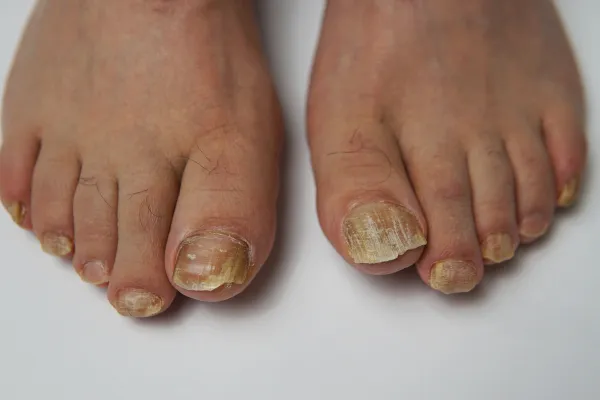
Thick Toenails After Injury: Will They Ever Go Back to Normal?
It’s a common question we hear at Coventry Foot Doctor:
"I injured my toe months ago, and now the nail is thick and discoloured—will it ever go back to how it was?"
If you’ve had a stubbed toe, dropped something heavy on your foot, or worn tight shoes that constantly press on your toenail, you may notice it thickening over time. But why does this happen, and more importantly, can it be reversed? Let’s break it down.
🚨 What Causes Thickened Toenails After Trauma?
Toenails are more delicate than they seem. An injury to the toe can damage the nail matrix—the part under your skin where the nail grows from. When this matrix is bruised, crushed, or scarred, the nail may grow back abnormally.
Common signs of trauma-induced nail thickening:
A nail that grows slower than usual
Yellow or brown discoloration
Lifting or separation from the nail bed
Thick, crumbly or distorted nail surface
Pain or pressure when wearing shoes
These symptoms can appear weeks or even months after the injury, making it hard to connect the dots unless you remember the incident.
🧠 Will the Nail Ever Go Back to Normal?
It depends on the extent of the damage.
Mild trauma (like occasional pressure or a small bump) may result in temporary thickening. With proper care and time, the nail can grow out normally again over several months.
Severe trauma (like dropping a heavy object or long-term pressure from tight footwear) can cause permanent changes to the nail matrix. In this case, the nail may continue to grow thickened or misshapen.
Unfortunately, once the matrix is scarred, the nail may never fully return to its original appearance. But the good news is that there are ways to manage and improve the look and feel of the nail.
🛠️ What Can Be Done About It?
At Coventry Foot Doctor, we take a tailored approach depending on the condition of your nail. Here’s how we help:
1. Toenail Debridement (Reduction)
We use specialist instruments to painlessly reduce the thickness of the nail, making it easier to manage and more comfortable in shoes.
2. Nail Reconstruction Options
In some cases, we can cosmetically restore the nail using a medical-grade resin that gives a natural look.
3. Antifungal Treatment (If Needed)
Injured nails are more susceptible to fungal infections. If a fungal element is present, we’ll treat it with topical or oral antifungal options.
4. Footwear Advice
We help you find better-fitting shoes to prevent further trauma, especially if you're active or wear safety boots regularly.
5. Nail Removal (In Severe Cases)
If the nail is causing constant pain or recurrent infection, permanent removal may be considered. This is a simple, minor procedure done under local anaesthetic.
⏳ How Long Does It Take to Heal?
Toenails grow very slowly—around 1 to 2 mm per month. It can take 12 to 18 months for a toenail to fully regrow, which means visible improvements will take time.
Patience, proper care, and monitoring by a podiatrist are key.
🧴 What You Can Do at Home
Keep the nail short and clean
Avoid pressure from tight shoes or socks
Use a moisturising urea-based foot cream
Never attempt to dig or cut under the nail yourself
If the nail becomes painful, discoloured, or starts lifting, seek professional advice
📍 When to See a Professional
If your thick toenail is:
Causing pain or pressure
Discoloured or crumbling
Changing shape rapidly
Making it difficult to walk or wear shoes
Accompanied by other symptoms like odour or infection
…it’s time to get it assessed. What looks like an “ugly toenail” could actually be something more serious—and the earlier we catch it, the better the outcome.
👣 We’re Here to Help
At Coventry Foot Doctor, we help people every day with nail trauma, thickened toenails, and related foot concerns. Whether you want relief from discomfort or just want to feel more confident showing your feet again—we’ve got a solution for you.
Ask Abid And His Team
Fill in the form to request a Call From Our Team
One of our team will call you for FREE and answer any questions or concerns you may have about your uncomfortable Foot Pain
© Copyright 2022. Biomechanix Clinic Ltd. All rights reserved.





